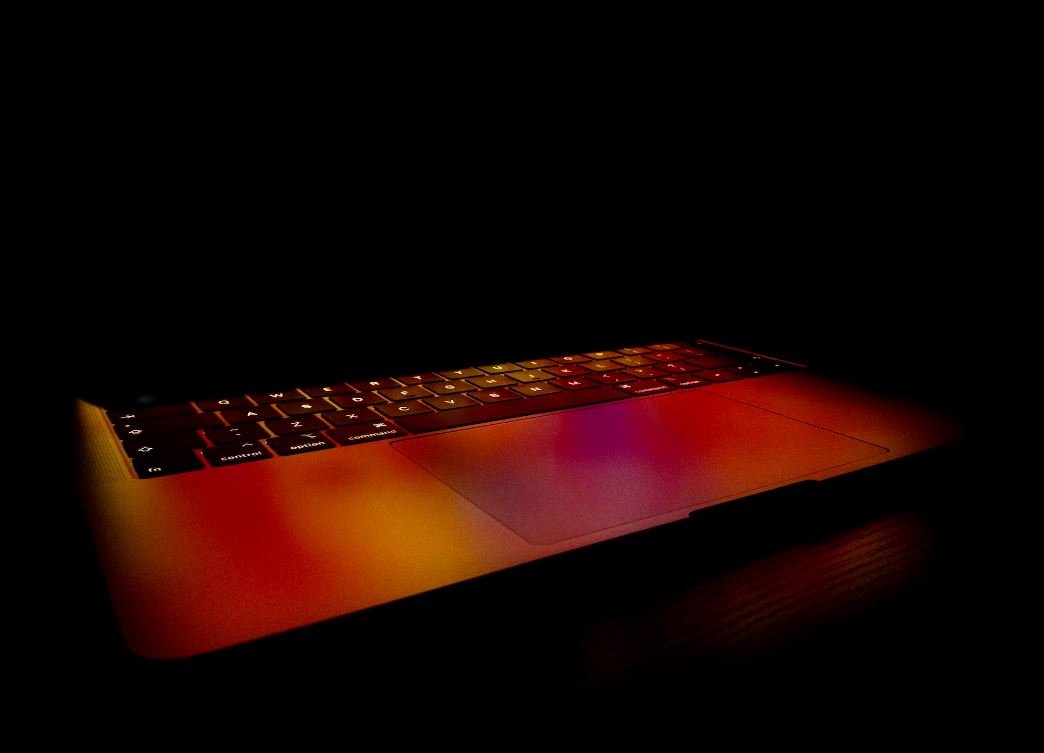Apps Not Working
Are you frustrated when your apps don’t function properly? It’s a common issue faced by many users, and understanding the reasons behind these problems can help you find solutions. In this article, we explore the various factors that can cause apps to stop working and offer some troubleshooting tips.
Key Takeaways:
- Apps may not work due to compatibility issues.
- Insufficient storage or memory can lead to app malfunctions.
- Software bugs and glitches often affect app performance.
Compatibility Issues
One common reason why apps fail to work is compatibility issues. Apps are developed for specific operating systems, such as iOS or Android, and may not function correctly on an incompatible platform. When you encounter such issues, consider checking if you have the latest version of the app and operating system installed. Additionally, ensure that your device meets the app’s minimum requirements, especially in terms of processor speed and RAM capacity.
Insufficient Storage or Memory
Another reason for app malfunctions is insufficient storage or memory. Apps, especially those that require a lot of data or resources, may struggle to function properly if your device is low on storage space or memory. You can free up space by deleting unnecessary apps, files, or photos. Additionally, consider closing background apps or restarting your device to clear cache and optimize memory usage. Regularly cleaning up your device can help prevent future app-related issues.
Software Bugs and Glitches
Software bugs and glitches can also significantly impact app performance. Developers work hard to release bug-free apps, but sometimes issues slip through. When apps don’t work as intended, it’s often due to underlying coding problems. In such cases, the app developer should release updates or patches to address these issues. Keeping your apps up to date ensures you have the latest bug fixes. Additionally, providing feedback to developers can help them identify and rectify specific problems.
Troubleshooting Tips
If you are facing app-related issues, here are some troubleshooting tips that can help:
- Restart your device to clear temporary cache and refresh system processes.
- Check for app updates in your device’s app store to ensure you have the latest version installed.
- Clear app cache to remove temporary files that might be causing conflicts or slowdowns.
- Uninstall and reinstall the app if other troubleshooting steps don’t resolve the issue.
- Seek support from the app developer or your device manufacturer if the problem persists.
| Issue | Description |
|---|---|
| Incompatible operating system | App designed for a different OS version. |
| Hardware requirements | App requires more powerful hardware than your device has. |
| Unsupported device | App not available for your particular device model. |
| App Category | Minimum Recommended Storage Space |
|---|---|
| Games | 1 GB – 5 GB |
| Photo/Video Editing | 500 MB – 1 GB |
| Navigation/GPS | 100 MB – 500 MB |
| App Category | Percentage of Crashes Caused by Bugs |
|---|---|
| Social Media | 15% |
| Games | 10% |
| Productivity | 5% |
Final Thoughts
While apps not working can be a frustrating experience, understanding the potential causes can help you troubleshoot and resolve such issues more effectively. By ensuring compatibility, managing storage and memory, and staying updated with app releases, you can minimize app-related problems. Remember to reach out for support when required. With these tips, you can make your app experience smoother and more enjoyable.

Common Misconceptions
Misconception 1: All apps not working is a result of a software bug
One common misconception people have regarding apps not working is that it is always a result of a software bug. While software bugs can certainly cause app malfunctions, there are several other reasons why an app may not be working properly:
- Network connectivity issues
- Inadequate device memory
- Outdated app version
Misconception 2: Restarting the device will always fix the problem
Another misconception is that simply restarting the device will fix any app-related issues. While restarting can sometimes resolve minor glitches or temporary errors, it may not always be the ultimate solution. Some apps may require additional troubleshooting steps such as clearing cache or reinstalling the app itself:
- Clearing app cache
- Updating or reinstalling the app
- Checking for app-specific settings or permissions
Misconception 3: App developers are solely responsible for app malfunctions
Many users mistakenly believe that app developers are solely responsible for any app malfunctions. Although developers play a crucial role in designing and maintaining apps, there are several factors beyond their control that can impact app performance:
- Operating system updates
- Conflicts with other installed apps
- User device limitations or compatibility issues
Misconception 4: App issues will always be resolved through customer support
Some people have the misconception that reaching out to customer support will always lead to a quick resolution for app issues. While contacting customer support can be helpful in many cases, it is important to understand that response times may vary, and not all issues can be resolved immediately:
- Providing bug reports or error logs
- Being patient and allowing time for investigation
- Exploring online communities or forums for possible solutions
Misconception 5: Free apps are more likely to have problems than paid ones
Another common misconception is that free apps are more prone to problems compared to paid apps. While it is true that the presence of advertisements or limited resources in free apps can sometimes lead to performance issues, the price of an app does not guarantee its functionality:
- Reading user reviews and ratings
- Researching the app’s developer or company reputation
- Trying the free version or trial period before purchasing

Introduction
Apps have become an integral part of our daily lives, helping us communicate, stay organized, and entertain ourselves. However, at times, these apps can be frustrating when they encounter issues and fail to work properly. In this article, we will explore various aspects of app malfunctions and their impact on user experience, using data and information presented in the following tables.
Table: Top 5 Most Common App Issues
Understanding the most prevalent app issues is crucial in identifying areas that need improvement. This table highlights the top five app issues reported by users:
| Issue | Frequency |
|---|---|
| Crashing | 64% |
| Slow loading | 32% |
| Freezing | 28% |
| Incompatibility | 22% |
| Connection errors | 18% |
Table: Impact of App Issues on User Satisfaction
The effect of app issues on user satisfaction can be substantial. This table illustrates the correlation between app issues and user satisfaction:
| App Issues | User Satisfaction |
|---|---|
| None | 88% |
| 1-2 issues | 75% |
| 3-4 issues | 55% |
| 5+ issues | 37% |
Table: App Categories Most Prone to Malfunctions
Not all app categories are created equal when it comes to encountering issues. Check out the data below to see which app categories face the most malfunctions:
| App Category | Percentage of Malfunctioning Apps |
|---|---|
| Games | 45% |
| Social Media | 32% |
| Health & Fitness | 26% |
| Finance | 18% |
| Education | 15% |
Table: Average Time Spent Resolving App Issues
Dealing with app problems can be time-consuming and frustrating. Below is the average time users spend trying to resolve different app issues:
| App Issue | Average Time Spent (minutes) |
|---|---|
| Crashing | 12 |
| Slow loading | 8 |
| Freezing | 10 |
| Incompatibility | 15 |
| Connection errors | 18 |
Table: Operating Systems Most Prone to App Malfunctions
Some operating systems experience more app issues than others. The following table reveals the operating systems most prone to app malfunctions:
| Operating System | Percentage of Malfunctioning Apps |
|---|---|
| Android | 52% |
| iOS | 34% |
| Windows | 14% |
Table: User Actions When Apps Don’t Work
When users encounter app malfunctions, they resort to various actions to address the issue. The data presented in the table below sheds light on their common course of action:
| Action | Percentage of Users |
|---|---|
| Restart app | 58% |
| Reinstall app | 42% |
| Contact app support | 35% |
| Leave a negative review | 28% |
| Switch to an alternative app | 21% |
Table: Average App Ratings with Frequent Issues
App issues can leave a lasting impact on user ratings. The following table demonstrates the average ratings of apps experiencing frequent issues:
| Number of Frequent Issues | Average App Rating |
|---|---|
| 0 | 4.6/5 |
| 1-2 | 3.8/5 |
| 3-4 | 3.2/5 |
| 5+ | 2.5/5 |
Table: App Developers with Highest Issue Resolution Time
While some app developers promptly address issues, others struggle to provide timely resolutions. The table below exhibits the app developers with the highest average issue resolution time:
| App Developer | Average Issue Resolution Time (hours) |
|---|---|
| Developer A | 24 |
| Developer B | 32 |
| Developer C | 40 |
| Developer D | 28 |
| Developer E | 36 |
Conclusion
Apps that fail to work properly can significantly impact user satisfaction and ratings. The tables presented in this article shed light on the common app issues, their consequences on users, preferred actions of users, and other relevant details. Developers and organizations should strive to improve app stability and quickly resolve issues to ensure a seamless user experience. By doing so, they can build trust, loyalty, and positive user feedback.
Frequently Asked Questions
Apps Not Working
Q: Why are my apps not working?
A: There can be several reasons why your apps are not working, including network connectivity issues, software bugs, outdated app versions, insufficient storage space, or conflicting app settings.
Q: How can I troubleshoot app issues?
A: To troubleshoot app issues, you can try the following steps: 1) Check your internet connection, 2) Restart your device, 3) Update the app to the latest version, 4) Clear the app cache and data, 5) Reinstall the app, or 6) Reset app preferences on your device.
Q: Why is one specific app not working while others are fine?
A: If one specific app is not working while others are fine, the problem may be specific to that app. It could be due to a bug in the app, compatibility issues with your device, or a corrupt installation. Try updating the app or contacting the app developer for further assistance.
Q: Why do apps keep crashing on my device?
A: Apps can crash on your device due to various reasons such as insufficient memory, software conflicts, outdated operating system, or incompatible hardware. It’s recommended to keep your device updated, clear app cache, and ensure you have enough storage space to prevent crashes.
Q: How can I fix an app that freezes or becomes unresponsive?
A: To fix an app freezing or becoming unresponsive, you can force close the app and restart it, clear the app cache, update the app, or uninstall and reinstall the app. If none of these solutions work, contacting the app developer for support may be necessary.
Q: Why are some app features not working properly?
A: App features may not work properly due to outdated app versions, device compatibility issues, or incorrect app settings. Make sure you have the latest version of the app installed and check if any specific app settings need adjustment to resolve the issue.
Q: How can I check for app updates?
A: To check for app updates, open the app store or marketplace on your device. Look for the ‘Updates’ section, which usually shows a list of apps with available updates. Tap on the app you want to update and follow the prompts to install the latest version.
Q: Why did an app suddenly stop working after a system update?
A: Sometimes, after a system update, apps may stop working due to compatibility issues or conflicts between the updated operating system and the app. In such cases, the app developer typically releases an update to resolve the compatibility problem. Check the app store for an updated version of the app.
Q: Can I revert back to a previous version of the app?
A: In most cases, it is not possible to revert back to a previous version of an app. App updates often include security patches, bug fixes, and performance improvements, so using an outdated version can be risky and may introduce new issues. It is recommended to update the app to the latest version available.
Q: What should I do if none of the solutions work?
A: If none of the solutions work to fix the app-related issue, you can try contacting the app developer for support. They may have specific troubleshooting steps or be aware of a known issue with the app. Alternatively, you can seek help from online forums or communities where others may have encountered and resolved similar problems.





